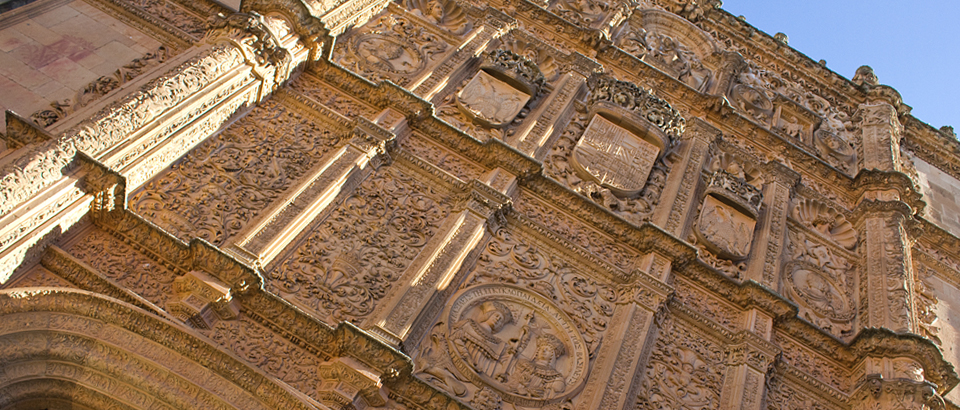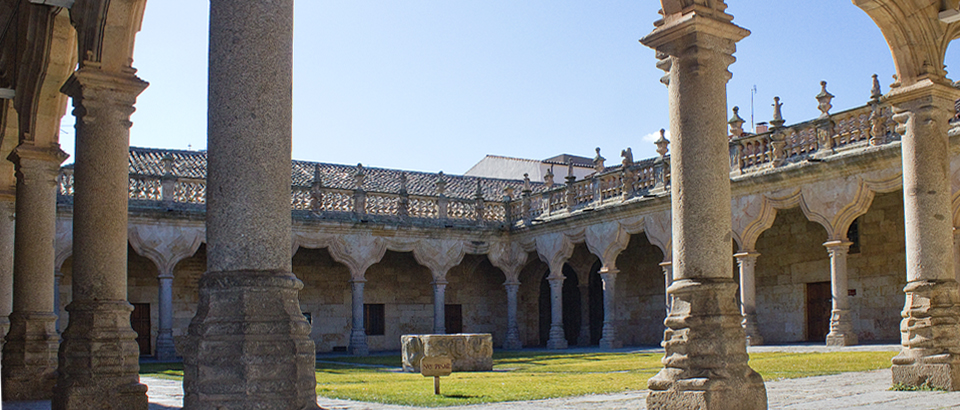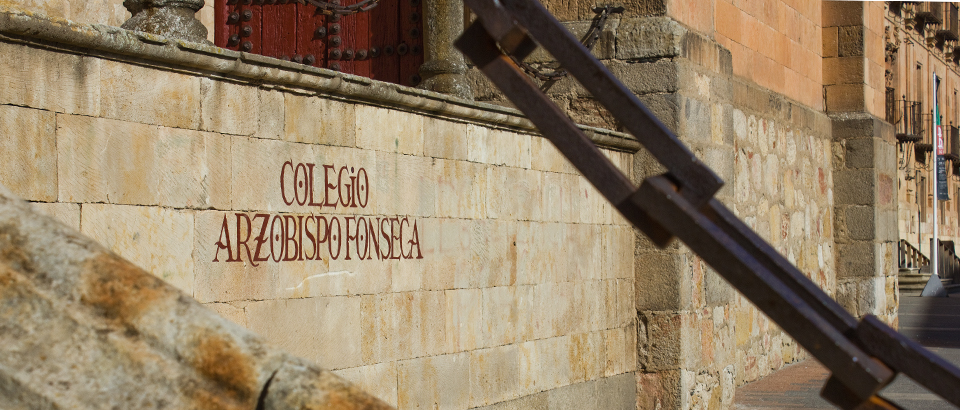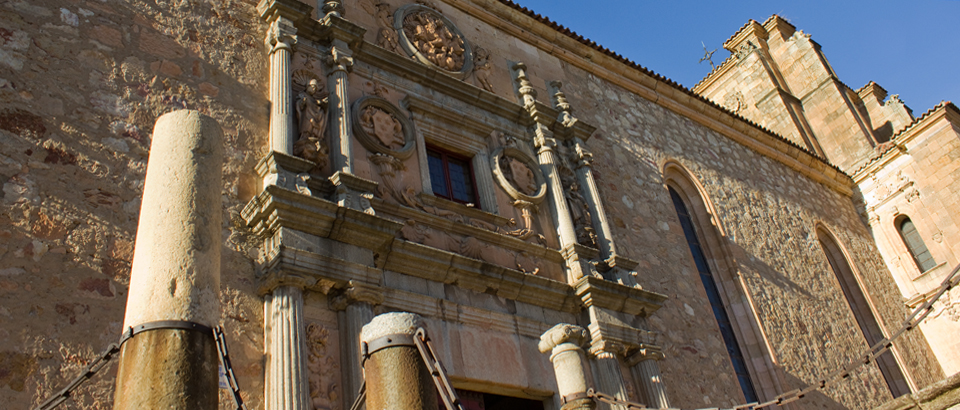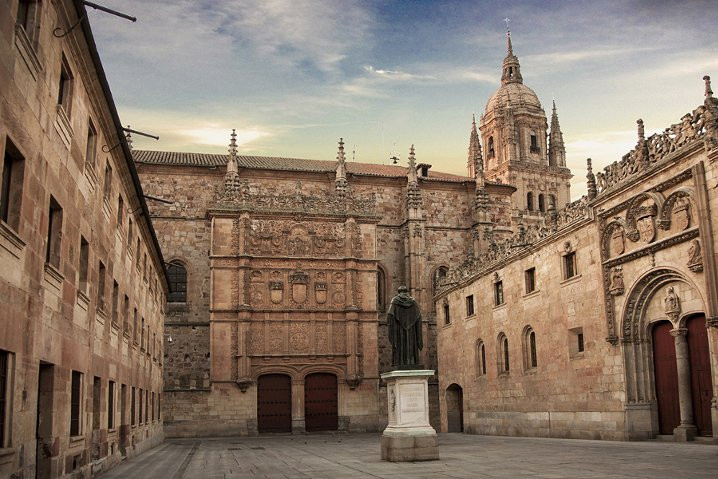
Salamanca is in the central area of Spain, 212 kilometres from the capital, Madrid. It has been described as universal, magnificent, wise, young and golden: Salamanca is known as “La Dorada”, or “Golden City”, because of the golden glow of its sandstone buildings. This charming town is untouched in its architectural purity. It is one of the five Spanish cities declared by UNESCO as a World Heritage Site. Salamanca boasts a student population of almost 35,000 (approximately 6,000 of whom are foreigners) which provides a lively atmosphere and nightlife. It is a common inland destination well worth discovering for many reasons:
-
World Heritage: Salamanca is exceptional and unique. UNESCO has recognised this fact, giving its old town the World Heritage designation. Plaza Mayor Square, the University, the Clerecía building, the Cathedrals, Casa de las Conchas… there is a long list of monuments, houses and palaces to see in Salamanca, so take your time and enjoy!
-
A centre of learning This is the university city par excellence: Salamanca University was the first to be founded in Spain and is also one of the oldest in Europe. In its heyday it was one of the most highly regarded European universities. For this reason it has been attended by some of the greatest Spanish thinkers, artists and writers.
-
City of the Spanish language This city saw the production of the first Grammar of the Castilian Language in the 15th century, which became a fundamental instrument for its expansion throughout the world. It is also a favourite destination amongst foreign students wanting to learn Spanish. As you would expect, Salamanca is one of the most important stages on the Route of the Spanish Language.
-
Crossroads : The Vía de la Plata, the old Roman route that links the north and south of Spain, passes through Salamanca. It is a good base to explore interesting towns and villages nearby, that are also on the path of this ancient road, such as Guijuelo and Béjar.
-
Meeting point : Its humanist tradition, the open character of the local people, its cultural concerns, the wealth of its heritage… These are just a few reasons why Salamanca was European City of Culture in 2002.
-
Youthful spirit : Salamanca has a wealth of history, but it is also modern, fun and dynamic. The student population takes care of giving life and atmosphere to this city 24 hours a day.
-
The golden city: You should experience Salamanca by day and by night, but above all at dusk. This is when the sun gives a golden hue to the material used in the construction of Salamanca’s monuments: Villamayor stone.
Roman bridge

The Roman Bridge used to be the main entrance into Salamanca. It was an essential part of the Roman Silver Route (la Ruta de la Plata), which ran from the silver mines in the North, in Astorga, to Mérida. On “El Puente Romano”, only the first 15 arches nearest to the city are original, the remainder having been swept away by a flood in 1626. They are made of rustic granite masonry and seated on pillars with cutwaters directed against the river’s flow.
The University

The University of Salamanca dates back to 1218, which makes it the oldest in Spain. Founded by King Alfonso IX only a short period of time after the Universities of Bologna and Paris, it is the third oldest university in Europe, and the fourth oldest in the world. During the 16th Century, it was one of the most important cultural centres in Europe. The interior is made of a two-floored cloister, connected to each other by beautiful Gothic stairs adorned with allegorical reliefs. On the ground floor, ancient classrooms named after important intellectuals that marked the University’s history are distributed around the cloister. In the library, 400 books from the 15th Century are kept, in addition to thousands of volumes and manuscripts and a collection of globes acquired in Paris. Its façade, begun in 1415, is a masterpiece of the Plateresque style and is divided in three main bodies, where vices and virtues are represented. To the right, as one looks at the façade, three skulls will be seen on the broadest pilaster, and on the left-hand skull is the frog, interpreted as a symbol of sin. The frog has been converted into an object for students’ and tourists’ superstitions, granting good luck to those who find it. Today’s University: The University of Salamanca enjoys an enviable past, but lives a flourishing present and promising future, supported by its international prestige. Nearly 2.500 teachers train almost 32.000 students every year in its four seats of Ávila, Béjar, Salamanca and Zamora. The University offers almost 100 Graduate courses (diploma and degree courses), more than 90 Phd programmes, nearly 40 Degrees specific of our University and uncountable activities of university extent. Important scientists like Steven Weinberg and Gerardus’t Hooft, and many other public figures (like Javier Pérez de Cuéllar, Mario Soares, Federico Mayor Zaragoza, Jacques Delors, José Saramago or Carlos Fuentes) have been appointed Doctor Honoris Causa in our University.
New Cathedral

The interior of Salamanca’s New Cathedral, in particular the pattern of the vaulting, the delicacy of the cornices and the sweep of the pillars, strikes one immediately on entering. The eight windows in the lantern are given added effect by a drum on which scenes from the Life of the Virgin were painted in the 18th Century. In the cathedral’s interior, the decoration is rich and elegant. The choir situated in the main nave is by Alberto Churriguera. The Plateresque organ was built in 1568 by Damian Luis and the Churriguera organ dates from 1745.
The altarpiece of the main altar in the Old Cathedral hosts one of the most important pictorial works found in Salamanca , made in 1445 by Nicolás Florentino. The work is made up of 54 painted tables, crowned by the Last Judgment, where the Virgin’s and Christ’s life are narrated. In addition, over the altar is the Virgin of the Fertile Valley, patron of the city, carved in wood except the hands and the head, which are made out of bronze.
House of Shells

The House of Shells (Casa de las Conchas) is one of the best examples of 15th-Century Gothic, with clear traces of Italian Renaissance influence. The front is decorated with more than 300 scallop shells, due to the fact that its first owner, Rodrigo Árias, was a member of the Order of Santiago (the scallop shell is traditionally associated with St. James, Santiago). The patio is one of the most typical of Spanish cloisters. The staircase, covered by a coffered ceiling is of Italian influence. Today the Casa de las Conchas serves as a public library and the top floor is frequently used as a gallery for local and international artists.
St stephen’s Convent

Work on St. Stephen’s Convent was begun in 1524 under the direction of the Renaissance architect Juan de Álava, then later continued by Juan de Rivero Rada, Pedro Gutierrez, and Juan de Salcedo. This gothic building was consecrated in 1610. The main doorway is considered to be one of the finest achievements in the Spanish Plateresque style. The 16th Century portico on the right hand side of the portal is also of great artistic worth and an example of the purest Renaissance style. An example of Modernist architecture in Salamanca is the enchanting mansion built by Joaquín Vargas at the beginning of the 20th Century, the Casa Lis. Its unique iron structure and stain-glass windows as well as its Gaudi-like twisted floral patterns ensure that it is one of the most memorable sights of Salamanca. It now houses the city’s Art Nouveau and Art Déco museum where one can admire over 1600 works of art from the modernist and belle époque periods. The porcelain dolls, the Faberge jewels and the Lalique and Emile Galle glasswork are all outstanding. There are also displays of paintings, furniture, porcelain, enamels and bronzes.
Plaza Mayor, the life and soul of Salamanca
Salamanca’s Plaza Mayor, in addition to being one of the main monuments of Spanish Baroque, is the heart of the city. It is, without a doubt, one of the most beautiful Spanish squares, maybe one of the most beautiful in the world. It was constructed between 1729 and 1755 by Alberto Churriguera. The square has 88 arches, its spandrels decorated with blazons of distinguished characters of Spain’s history: Spanish kings, saints, discoverers, conquerors and wise men. Above them rise three-story mansions with austere iron balconies. The square is first of all a meeting point, during the beautiful evenings the plaza is teaming with families, students, and travellers basking in the late day sun at one of the several outdoor cafes, or sitting in small groups scattered around the middle of the plaza floor. On 2005 the city celebrated the 250 anniversary of the Plaza Mayor, and on 2002 the city received the title of European Capital of Culture, which represents recognition of the city’s and University’s role in the European historical context and, also, in the American context.

The European Union’s decision, of granting Salamanca the title of European Capital of Culture in 2002, was based in the main characteristics of our city: Salamanca stands out as a university city and as a rich ensemble of historical and artistic heritage. Furthermore, today’s Salamanca can be defined as an open, cosmopolitan city, with a rich cultural activity.
MORE ABOUT SALAMANCA
- Weather forecast for Salamanca
- World Heritage Cities of Spain
- Sightseeing in Salamanca
- Monumental Tour of Salamanca
- Virtual Tour of the University of Salamanca
- University of Salamanca



